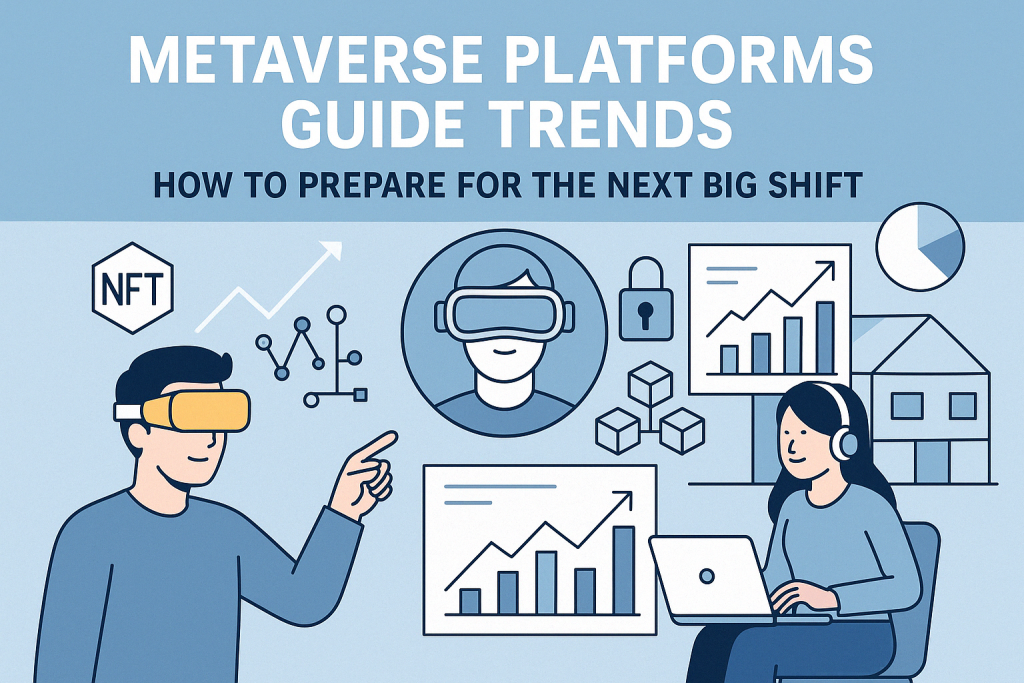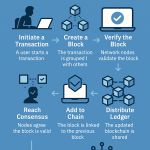
Picture this: you’re at a networking event, and someone mentions “blockchain” as the future of finance, healthcare, and even voting. Your curiosity piques, but the jargon—decentralized ledgers, crypto, nodes—feels like a maze. If you’re a 30–40-year-old professional, maybe exploring tech investments or side hustles while balancing family budgets, blockchain might seem intimidating yet essential. This guide is your roadmap to understanding blockchain basics, with practical examples and clear steps to get started. Let’s dive into what blockchain is, how it works, and why it matters in 2025.
Table of Contents
What Is Blockchain? A Simple Breakdown
Blockchain is a digital ledger that records transactions securely and transparently across a network of computers. Imagine a shared Google Doc where every edit is permanent, visible to all, and locked with a digital seal. Unlike traditional databases run by banks or corporations, blockchain is decentralized—no single entity controls it, making it trustworthy and efficient.
Take Sarah, a 35-year-old financial analyst. She sends $200 to her cousin in Europe. Normally, banks charge high fees and take days to process. With blockchain, the transaction is recorded instantly, verified by a network, and completed in minutes for a fraction of the cost. That’s the power of blockchain basics in action.
Why “Chain”?
Each transaction is stored in a “block.” When a block is full, it’s linked to the previous one, forming a chain. This structure ensures data can’t be altered without network consensus, boosting security. Curious about the mechanics? Check out How Blockchain Works for a deeper dive.
How Does Blockchain Work?
Blockchain’s magic lies in its process. Here’s a step-by-step look at how it functions:
- Initiate Transaction: Someone sends cryptocurrency or logs a contract.
- Create Block: The transaction is bundled with others into a block.
- Verify: Network computers (nodes) check the block’s validity using algorithms like Proof of Work.
- Reach Consensus: Nodes agree the block is legitimate.
- Add to Chain: The block is linked to the previous one with a cryptographic hash.
- Distribute: The updated ledger syncs across all nodes.
This process takes minutes and is secure due to encryption. For example, in 2024, Walmart used blockchain to trace contaminated spinach to its source in seconds, saving millions in recall costs (IBM Blockchain).
Why Blockchain Matters in 2025
For tech enthusiasts and investors aged 30–40, blockchain is a game-changer. The global blockchain market is expected to hit $39 billion by 2025, driven by its ability to cut costs and boost trust, per Statista. Whether you’re budgeting for family expenses or eyeing crypto investments, blockchain offers solutions.
Consider Mike, a 38-year-old dad who invests in startups. He uses blockchain-based platforms to track his portfolio transparently, avoiding shady middlemen. Blockchain’s rise also fuels opportunities in decentralized finance (DeFi) and NFTs, making it a hot topic for 2025. Explore more at The Future of Blockchain.
Key Features of Blockchain Technology
Blockchain’s strength comes from its unique traits. Here’s a quick rundown:
- Decentralization: No single entity controls the network, reducing risks.
- Immutability: Data can’t be altered, ensuring integrity.
- Transparency: All transactions are public, building trust.
- Security: Cryptographic encryption protects data.
Feature Comparison
| Feature | Benefit | Example |
|---|---|---|
| Decentralization | Cuts out middlemen | Peer-to-peer payments |
| Immutability | Prevents fraud | Supply chain tracking |
| Transparency | Builds trust | Charity donations |
| Security | Protects data | Healthcare records |
Real-World Blockchain Use Cases
Blockchain isn’t just for coders—it’s reshaping daily life. Here are three examples:
Finance
DeFi platforms like Ethereum let you lend or borrow without banks. In 2024, DeFi managed $100 billion in assets, per CoinDesk.
Supply Chain
IBM’s blockchain ensures ethical sourcing. A mom buying organic baby food can scan a QR code to verify its farm-to-store journey.
Healthcare
Blockchain secures patient records, letting doctors share data safely. This saved a hospital chain 20% in admin costs last year.
Blockchain vs. Traditional Systems
How does blockchain compare to old-school systems? Here’s a breakdown:
| Aspect | Blockchain | Traditional Systems |
|---|---|---|
| Control | Decentralized | Centralized |
| Speed | Minutes | Days |
| Cost | Lower fees | Higher fees |
| Trust | Transparency-based | Institution-based |
Want to know more about blockchain types? See Public vs Private Blockchains.
How to Get Started with Blockchain
Ready to explore blockchain? Follow these steps:
- Learn Basics: Read guides like this or Blockchain Glossary (1–2 hours).
- Choose a Platform: Try Ethereum or Binance Smart Chain (10 minutes).
- Set Up a Wallet: Install MetaMask to store crypto (10 minutes).
- Explore Apps: Test DeFi or NFT platforms (1 hour).
- Join Communities: Engage on X for tips (ongoing).
Resources: Browser, $10–$50 for crypto, 5–10 hours total. It’s easier than you think!
FAQs About Blockchain
What’s blockchain in simple terms?
Blockchain is a secure, digital ledger that records transactions across a network of computers. Think of it as a shared, tamper-proof notebook where every entry is permanent and visible to all participants, used for things like payments or tracking goods.
Is blockchain just for crypto?
No, blockchain supports many applications, like securing medical records, tracking supply chains, or automating contracts. Cryptocurrency, like Bitcoin, is just one use case.
How do I start with blockchain as a newbie?
Start by reading beginner guides, set up a crypto wallet like MetaMask, and explore platforms like Ethereum. Joining online communities on platforms like X can also help you learn.
Is blockchain safe for transactions?
Yes, blockchain is highly secure due to its encryption and decentralized structure. However, always use trusted platforms and safeguard your private keys to stay safe.
Ready to master blockchain? Join our Web3 Learning Hub for more guides, or share your thoughts in the comments below. Subscribe for weekly tech insights!
Last updated: April 30, 2025

